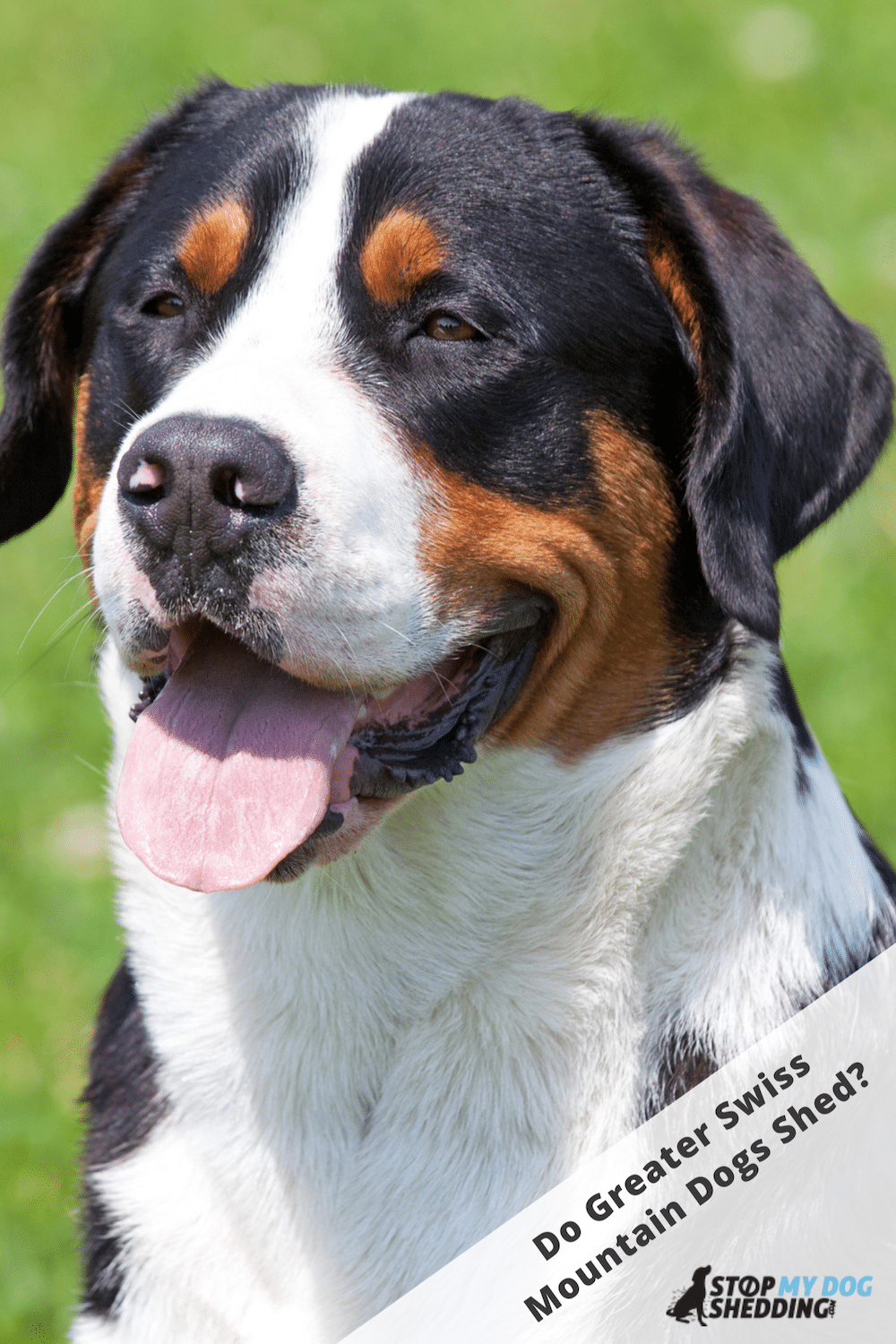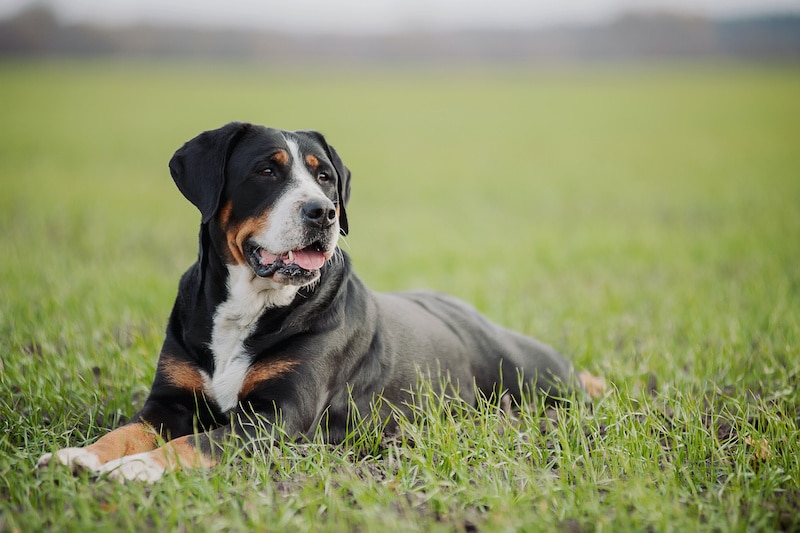Greater Swiss Mountain Dogs (or Swissies) are large working dogs that are said to have been developed in the Swiss Alps by crossing mastiff-type dogs and Alpine mountain dogs.
Like their cousin, the Rottweiler, they were employed as herders and protectors of livestock, as well as “pulling dogs” that hauled carts to and from markets. Over time, they developed a reputation for being loyal, dependable, strong, and highly capable working dogs.
Do they shed much? Swissies shed a moderate amount of fur year-round and, like most double-coated dogs, more during seasons like spring and fall. The good news is they’re quite a low maintenance dog, so it’s relatively easy to manage to the shedding.
Read on to learn more.
Guide to Swissie Shedding
Greater Swiss Mountain Dogs are a moderate shedding breed. Which means they do shed, and you probably will notice some hair floating around the home, but not as bad as some dogs.
To help put this into perspective, Swissies generally shed less hair than their close relative, the Bernese Mountain Dog, and other dogs they’re related to such as the St. Bernard. But more than low shedding dogs like the Giant Schnauzer for example.
What causes the shedding?
Dog shedding is a normal, healthy process whereby the dog is shedding (or molting) his old, dead fur to make way for the new batch. It’s a continual process and something almost all dogs do to some extent, so it’s normally nothing to be concerned about.
That said, sometimes dogs can be stressed, have an allergy to something, or have some other type of health issue that causes them to shed heavily. So if this is something you’re concerned about then it may be worth calling up your local veterinarian for assistance.
When do they shed?
Swissies don’t shed a huge amount of hair throughout the year, so it’s fairly manageable most of the time. But they are known to shed quite heavily once or twice a year, typically during spring and autumn, due to seasonal shedding. Which is just their natural process of adapting to the changing seasons.
How do you stop the shedding?
You can’t stop your dog from shedding. It’s normal for healthy dogs to drop at least some hair, so the best thing you can do is to learn to accept it and deal with it in the best way possible.
How? Managing shedding mostly comes down to ensuring your dog is healthy, that his diet is optimal, and keeping up with a proper grooming routine. By getting these simple things right, consistently, you are going to be able to reduce excessive molting and manage it to the point it’s hardly noticeable. Not to mention, save yourself some time vacuuming.
That doesn’t mean you should rush out and buy some fancy pants, expensive dog food or “magic” shedding supplement. Because there is no quick fix solution.
Related: Does Coconut Oil Help Reduce Shedding?
But your vet should be able to help you select a high quality dog food that contains healthy fatty acids, like Omega-3 and Omega-6. Which is not only good for your dog, but can help improve his coat and the strength of his hairs, in turn reducing unnecessary shedding.
Once you’re confident his diet is optimal, it mostly comes down to proper grooming. So let’s take a closer look at this now, so you know what’s needed to maintain his coat and manage shedding.
Grooming Your Swissie
Maintaining the coat of a Greater Swiss Mountain Dog is not difficult or time consuming. Like the Rottie, they’re a very low maintenance breed.
Their outer coat is made up of dense guard hairs that are about two inches long and the color is usually some combination of black, white, red or tan. While their thick undercoat is usually some shade of gray and helps protect them from the elements.
For the most part, Swissies only need to be brushed once or twice a week with a slicker brush or metal dog grooming comb. This, along with the occasional bath, is about all the need.
However, during periods of heavier than normal shedding, brushing and bathing more often can help reduce the amount of hair you need to clean up off of your floors and furniture. You may also find that a deshedding tool is more effective at removing the old, dead fur.
Related: Dog Shedding Brush Reviews and Buyer’s Guide
What we find works really well during shedding season is to bathe our dog first, blow out his coat with a cool blow dryer, and then brush him thoroughly. Together, we find that this gets a LOT of loose fur off of his coat.
Just keep in mind that brushing too often can lead to skin irritation. And the same is true for bathing. If you bath too often, or with low quality shampoos, this can dry out the skin. And not only is dry, irritated skin not good for your dog, it’s also a leading cause of shedding. So if you overdo it, you could be working against yourself.
Bottom Line
Greater Swiss Mountain Dogs are often described as dependable, faithful workers, and companions that are adored by the whole family.
And yes, they do shed. But because the molting is only moderate, and because they’re so easy to brush, managing the shedding is simple. For the most part, you just need to make sure that their diet is optimal and factor grooming into your weekly routine.
With that being said, if you can’t stand the thought of seeing dog hair in your home, or if you have pet allergies and want a non-allergenic dog, there are definitely more suitable breeds.













Please note: By submitting a comment using the above comment form, you confirm that you agree with the storage and handling of your data by this site as detailed in our Privacy Policy.